

www.fightingknifecrime.london
7 - April 2023
Issue
Connect With Us
FIGHTING KNIFE CRIME





3 www.FightingKnifeCrime.London Issue 7 4 Welcome to Issue Seven of Fighting Knife Crime London Magazine 7 In County Lines, Knife Comes at You Fast 10 Putting Youth Work at the Centre of the Fight Against Violence 14 A millennium of experience focused on diversion 18 “Out of Court Shouldn't be Out of Mind” 20 Identifying Violence Reduction Intervention Points –Applying a Public Health Approach Effectively 25 Deflection – An Effective, Out-of-Court Means of Addressing the Drug Crisis 29 The CARA effect How a Trauma-Informed Early Intervention for Domestic Abuse Offenders Opens the Space for Behaviour Change Fighting Knife Crime London Magazine is published by Iconic Media Solutions Ltd. Whilst every care has been taken in compiling this publication, and the statements contained herein are believed to be correct, the publishers do not accept any liability or responsibility for inaccuracies or omissions. Reproduction of any part of this publication is strictly forbidden. Front cover: upklyak - Freepik www.fightingknifecrime.london Contents
Foreword
Bruce Houlder, Founder of Fighting Knife Crime London (FKCL)

Welcome to the 7th quarterly edition of Fighting Knife Crime London’s online magazine. We focus on inspiring reform, changing lives, and collaborative effort. We seek to provide a voice to young people, and resources to all those who wish to help them. May I start with a plea? We have no paid employees, and so far we are proud to have achieved all we do without any recourse to scarce public funds. We are hugely grateful to those donors who so far have made this possible. But because of the increasing role we continue to play in London, we may very soon need to employ a Chief Officer to assist. Our costs are also increasing as we expand what we do. So, for the first time since our launch, I ask, can you help with funding please?
CLICK TO DONATE
• Perhaps you are business, small or large, looking to extend your social outreach and invest in something which is now of proven worth;
• Perhaps you are an individual looking to extend your charity portfolio;
• Our charity comes under the responsible umbrella of Catch221, the major social business, which provides us with our charitable status, and makes the necessary returns to the Charity Commission so all donations are eligible for tax relief.
If you can help, please donate using the donate button on this page. We need to ensure that all the free resources we produce are available to Londoners in the longer term.
Recent progress
Much has been achieved in the last quarter as we continue to work closely partners, the police and other charities to help young people in London.
Our signposting poster, and flyers, have proved a growing success. They also give access to the App and resources from our partners at Local Village Network, using simple QR codes. You can download these posters direct from this magazine, and print at home. These useful resources can already be seen in several major London trauma hospitals, and elsewhere. As with all we do, it is free.
4 www.FightingKnifeCrime.London
image: Wilhelm Schenk - Black Lab Media AB
On a personal level, I am delighted to have recently been invited to join the Pan London Violent Crime Community Reference Group, a conduit between several specialist commands and the community, enabling a two-way dialogue on the issues that affect residents. Alongside the daily work of maintaining our website and social media, in March I also gave a Ted Talk on “Fighting Knife Crime in London”. This can be accessed from our Home page here. I have accepted several engagements to speak elsewhere. I will never accept a fee for doing this.
DIVERSION
This month our magazine follows the major and now highly topical theme of diversion. The idea that criminalising young people for minor offending is fast losing traction. This in turn is increasing the opportunities that there are for imaginative alternatives. Police forces across the country are learning the benefits of engagement with the communities they serve, and using powers to breathe life in the multitude of ways in which some offending which affects our daily lives and well-being can be addressed by cross-partnership. This can now happen without recourse to the courts, and even without being required to make any admission. Those who offer their valuable contributions to this debate are Penelope Gibbs, Director of Transform Justice; Professor Eddie Kane, Jack Cattell and Jon Parry whose report making recommendations to the VRU you can find here; Jon Ross, Director of Research & Evaluation Center for Health and Justice, TASC; and Emma Hazan of the Hampton Trust (Project Cara).
We are indebted particularly to Jonathan Ley, CEO of our partners Make Time Count Today who has marshalled several of the contributors on this
ground-breaking approach, and adds his own invaluable contribution.

COUNTY LINES AND YOUTH WORKERS
This edition starts with two other subjects of interest and concern. First we hear from the subject matter expert, Dr. James Densley, Professor and Department Chair of Criminology and Criminal Justice at Metro State University (Minnesota, USA) and co-founder and co-president of The Violence Project who has recently written a book County Lines: Case Studies in Drug Crime and Deviant Entrepreneurship. We also have an inspiring piece from Robbie Cheyne, Head of Programmes for London Youth who reminds us of the important and selfless commitment and contribution made by Youth workers across London.
www.fightingknifecrime.london
5 www.FightingKnifeCrime.London FIGHTING KNIFE CRIME
Bruce Houlder
Founder of Fighting Knife Crime London (FKCL)
Bruce Houlder
FIGHTING KNIFE CRIME
[1] Catch22 is a registered charity (1124127) and a company limited by guarantee (06577534). Registered office: 27 Pear Tree Street, London EC1V 3AG. Tel: 020 7336 4800.
New from Bristol University Press
New from Bristol University Press
Use 20% discount code POCCL at checkout (expires 30 June)
Use 20% discount code POCCL at checkout (expires 30 June)
Use 20% discount code POCCL at checkout (expires 30 June)
“A page turner...an essential understanding of county lines and all that it entails.”
“A page turner...an essential understanding of county lines and all that it entails.”
Mohammed Rahman, Birmingham City University
Mohammed Rahman, Birmingham City University
“A page turner...an essential understanding of county lines and all that it entails.”
Mohammed Rahman, Birmingham City University
Order your copy at bristoluniversitypress.co.uk/ contesting-county-lines
Order your copy at bristoluniversitypress.co.uk/ contesting-county-lines


Order your copy at bristoluniversitypress.co.uk/
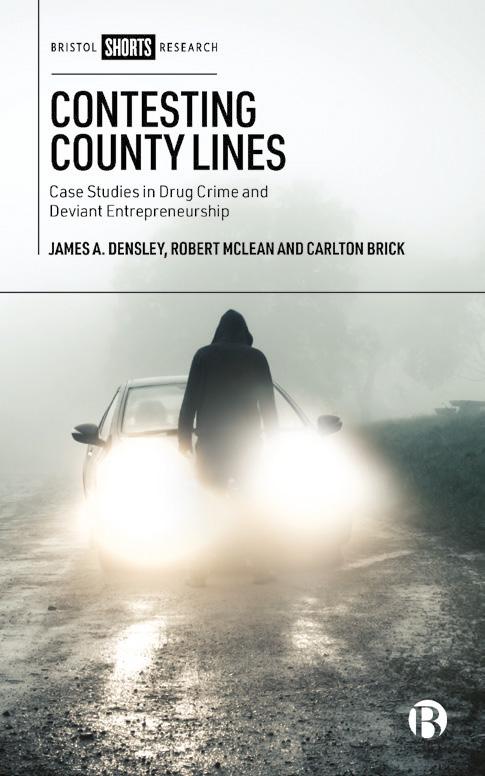
6 FIGHTING KNIFE CRIME www.FightingKnifeCrime.London
In County Lines, Knife Comes at You Fast
James Densley, Professor and Department Chair of Criminology and Criminal Justice at Metro State University (Minnesota, USA) and co-founder and co-president of The Violence Project
Robert was 16-years-old when his older cousin, Grease, recruited him to work his county line, selling drugs. Grease’s original sales pitch was £500 to visit him in A-Town for a week. Robert needed the money— every 16-year-old on his estate did—so he willingly made the journey east.
One week in A-Town became two and two became four, but what makes this county lines story different is Robert was genuinely enjoying life in A-Town.
He wasn’t a slave living in squalor. He was living in a real house. He’d made real friends. He was making real money. He was dressed in real designer clothes. And he had a real girlfriend—Stacy.
Robert was walking in the park one afternoon with Stacy. They stopped by the play area to chat with a few local young people. Robert was popular in A-Town. He had a reputation for being tough but fair. The girls wanted him and the boys wanted to be him.
7 www.FightingKnifeCrime.London FIGHTING KNIFE CRIME
image: macrovector
Just off in the distance, Robert noticed a tall, lean figure approaching. He was much older than everyone else and while he looked ‘dodgy’, it was the middle of the afternoon and Robert felt safe in the company of his friends.
“Hi wee man, how is it going?”, the man said, looking at Robert.
“Aye, good mate. You?”, Robert replied. “Yeah good. Is your name Robert yeah?”, the dodgy man asked
“Do I know you?”, Robert asked. “Have we met?”
“Once. You’re Grease’s boy, eh”, the man replied.
“No mate. I don’t know what you’re talking about”, Robert replied, wary about how a guy he had never met before could immediately connect him to Grease.
“I’m Jimmy” , the man said. It was one of Grease’s disgruntled customers. Little did Robert know that Grease had recently ripped him off.
Suddenly, Robert saw a flash of white in his peripheral vision followed by a blunt pain across his eye. Jimmy had punched him.
While taller and older than Robert, Jimmy’s punch was surprisingly weak. Robert retaliated, grabbing hold of Jimmy’s tracksuit top, and a brief scuffle ensued until Robert felt a sharp pain running up his cheek, from his top lip to his right ear, followed by a dizzying warm sensation.
Stacy screamed. A guttural scream.
That was the moment Robert’s stock bubble burst. All the fun in Town-A ended. Status gains were lost. No one wanted to be in his shoes now.
“He has fucking slashed you” , one of the local youths in the crowd who was
watching the fight shouted. “Oh mate –”, another one chimed in, ashen-faced.
Robert immediately let Jimmy go and backed up. He put his hand to his face and felt the warmth of the blood spilling down his arm.
“What have you done?” , Robert asked in disbelief.
Jimmy just kept coming. He lifted the knife up over his head and brought it back down on Robert. The blade ripped through his sleeve and cut into his arm.
Robert turned away and ran. Thankfully, the hospital was able to stitch him back together.
Grease’s county line soon fell apart. Grease viciously attacked Jimmy to avenge Robert and he was arrested for assault. At the same time, Robert wanted out. He was healing physically but not emotionally. In his own words, “I’d had enough. Thought I would do it for a wee bit and get some money. I have a cut on my face to show for it. Having to live with it [was too much]. ”
Robert’s is one of many true stories I gathered in the process of researching and writing Contesting County Lines: Case Studies in Drug Crime and Deviant Entrepreneurship with colleagues Robert McLean and Carlton Brick. The book, published by Bristol University Press, is set in and around Glasgow, Scotland, long regarded as the knife crime capital of Europe, and is based on a series of interviews with county lines victims and offenders.
The book challenges some of the common myths and misconceptions about county lines drugs networks with important implications for practitioners. For example, we find that people migrate from ‘hub’ cities to ‘county’ sites not just at the direction of gang leaders, but for personal and family reasons. Crime
8 FIGHTING KNIFE CRIME www.FightingKnifeCrime.London
opportunities and drug market expansion often are secondary motivations for gang proliferation and gang member migration.
We also find that the people who have some existing ties to the ‘county’ areas, like Grease in our story above, are chiefly responsible for the logistics on the ground. These people tend to be adults, not children, because children are developmentally too young and too conspicuous to engage in organized criminal activity. While some interviewees were demonstrably young, vulnerable, and exploited, many others were habitual offenders who entered county lines of their own volition, fully embracing a life of deviant entrepreneurship.
Conventional wisdom about county lines is that technology drives social change and mobile phones make drug dealing easier. While some drug dealers enthusiastically embrace the always-on culture of modern drug dealing and the use of smartphones and social media to reach customers, in our study there were drug dealers who found delivery dealing a chore – and a risk – and they only did it reluctantly to keep up with consumer demands and customer preferences.
Finally, trust in county lines is fragile, and in the end, violence or the threat of violence are often the only things keeping the gang together and the operation alive. County lines drugs networks are regulated by violence, but too much violence is bad for business, meaning that if events away in the county sites threaten the gang at home in the hub—like when Grease got arrested for assault—the gang will cut ties in the interests of self-preservation.
Such is the fallacy of ‘protection’ on the streets. Dealing drugs is potentially fraught with danger, but actions
intended to protect, like carrying a knife, are liable to endanger because buyers and sellers are equally engaged in the same arms race.
Robert discovered that fame and success in the drugs game are always fleeting. When you live by the sword, you die by the sword.
About the Author
Dr. James Densley is Professor and Department Chair of Criminology and Criminal Justice at Metro State University (Minnesota, USA) and co-founder and co-president of The Violence Project, a nonpartisan, nonprofit research center best known for its mass shooter database. Densley is the author of eight books, including County Lines: Case Studies in Drug Crime and Deviant Entrepreneurship. He has published over 50 peer-reviewed articles in top scientific journals, as well as more than 100 book chapters, essays, and other works in various outlets such as The New York Times, Time magazine, USA Today, The Wall Street Journal, and The Washington Post. His research on street gangs, criminal networks, violence, and policing has garnered global media attention. Densley earned his doctorate in sociology from the University of Oxford. In 2017, he was recognized for his outstanding community volunteerism with the Points of Light Award from the UK Prime Minister.

9 www.FightingKnifeCrime.London FIGHTING KNIFE CRIME
Putting Youth Work at the Centre of the Fight Against Violence
Robbie Cheyne, Head of Programmes, London Youth
We will never stop saying young people need youth work. That’s a mantra that we often repeat at London Youth, where I work as head of programmes. London Youth is a 135-year-old charity on a mission to support the capital’s youth sector to improve the lives of young people. We do this with and through our members – a network of 600 youth organisations – and at our two outdoor residential centres. If young people need youth work, we want to make sure that youth workers are the best they can be. Good youth work works, as we also like to say at London Youth! That’s why Rise Up was born.
Too many young Londoners experience the devastating effects of violence and the emotional and mental trauma that accompanies it. Rise Up is a free leadership training for frontline youth practitioners working with young people vulnerable to violence. Now in its third year, it is funded by the Mayor of London’s Violence Reduction Unit and developed and delivered in partnership with Leap Confronting Conflict, Power the Fight, and Clore Social Leadership. Through specialist training, coaching, mentoring and networking, this programme builds skills in leadership and youth work.
Youth clubs are places where young people choose to go, and thus provide a
unique opportunity to positively reach and impact young people, through consistent and trusted relationships. When it comes to fighting knife crime and preventing violence in London, we believe that reaching youth practitioners is vital, sustainable and transformational.
We’re really proud that 98% of participants would recommend Rise Up, and that 87% of managers noticed increased confidence in their youth workers taking part in the programme. We also think it’s really important that Rise Up gives youth workers a chance to build their network, and take time out from busy frontline work to focus on their development and share ideas with others. In the spirt of this, I thought I’d bring some Rise Up participants’ voices to this piece.
I first approached Jasmine Kahlia, an acclaimed multidisciplinary artist and youth practitioner. Jasmine has been doing youth work since 2014 with organisations such as Sound Connections, Sadlers Wells, Rich Mix, London Youth and also works in a freelance capacity.
‘From a young age, I’ve always known that I wanted to give back to the young people around me. I’ve been developing my practice within artistic and youthled spaces, and am passionate about deepening my knowledge, skills and
10 FIGHTING KNIFE CRIME www.FightingKnifeCrime.London
strategies while working with young people and youth organisations.
During the early stages of my career, I realised that I had many personal barriers from my past that I wanted to overcome within myself. To really make an impact as a youth practitioner, there was important progression and reflection I needed to first undertake. Growing up I encountered firsthand experience of crime, youth violence, gender discrimination, bereavement and was around drug misuse. I write about this a lot in my creative work, where re-learning and reframing my journey was difficult but necessary to be able to appropriately support myself and others through my practice.
I often had to detach my own traumas from the work I do, but drawing from experience has also helped me to connect with others who’ve faced similar barriers. I have a childhood friend currently serving

a prison sentence, an acquaintance that became involved in heavy drugs and one friend that was killed tragically from knife violence. Dealing with this has been difficult but through a variety of youth training sessions, case study work and in depth, trauma informed courses such as Rise Up, I have been able to take my practice to the next level. I feel confident and empowered to help and inspire others, whilst remaining healthy and safe within myself.
Through my practice I’ve been faced with the inner questions: ‘Do I hide my experiences from my colleagues and service users?’ Or, where appropriate, ‘do I bring examples and life experience into my practice and use it as a catalyst for positive affirming sessions, bringing my insight to guide young people where I can?’
Through the Rise Up course I undertook the work of exploring these questions and
11 www.FightingKnifeCrime.London FIGHTING KNIFE CRIME
seeing things from another light. The many discussions with my cohort and leaders around the issues of grooming, drug misuse and discrimination came up in sessions, which encouraged me to research more with regards to how I could implement my learning into the work I do with my young people. Rise Up created stable spaces that delve deep into the topics of safeguarding, online safety and conflict resolution which were all things that I wish the adults around me were knowledgeable about when I was growing up. These sessions helped me to frame my support work and enhance my practice.
As a youth worker, the most important work begins with self-development and self-progression. Having the responsibility of being a trusted adult to a young person means that I need to gain the tools to be able to positively impact the next generation and to give young people the wisdom, support and correct advice when recognising any negative influences that could lead to life changing consequences or decisions.
It was great to take part in the Rise Up course and I would recommend it for practitioners looking to upskill and connect with other youth workers around the UK and become confident and better leaders.’
I then spoke with Sherine Mccann, who has been involved in the youth sector industry for over twenty years working for Third Sector and various organisations. Sherine does a range of voluntary roles within Brent to support young people with regards to community stop and search monitoring and is on the safer neighbourhood panel. She also works as a school governor and she volunteers for organisations such as Relevant Partners and Revoseccus. She tells me:

‘I applied to the Rise Up programme, as I wanted to become a more equipped youth practitioner, and be able to better support young people around the issues of racism and identity. I wanted to broaden my knowledge with regards to tackling these issues in a positive and safe way. The programme explored the many key issues of mental health and equality and how to confidently challenge colleagues and policy makers in ways that would enable change to benefit the young people I work with and create more uplifting and healthy work environments.
The Rise Up Programme has been a great starting point for me and has complemented my existing skillset and knowledge where I feel assured that the work I do is of great use. The different informative sessions have given me the confidence to start the process of setting up
12 FIGHTING KNIFE CRIME www.FightingKnifeCrime.London
my own organisation, where I support and work with young people to become more empowered in a compassionate, reflective way. I am in the early stages of developing this project, where young people can gain a deeper understanding of self-identity and an awareness of how to keep safe within their communities and online.

I also support police officers in changing their narratives and biases with and around their interactions with young people, especially regarding those who have additional needs. My role is to support police officers with understanding the impact they have when communicating with the public and encourage them to be more aware of the range of complex needs a young person may have. Situations such as negative stop and searches or bad experiences with an officer can cause trauma, resulting in the individual reacting out of fear even when they haven’t done anything wrong.
I feel a lot more equipped in my practices since taking part in the Rise Up course. The programme has signified to me that I have the skills and knowledge to develop, teach and support professionals such as the police and those in the justice system to better understand the impact their interactions have on young people. I am currently training to become a Met facilitator, where I will be delivering training to police officers on how to improve their encounters with young people and how to ensure their behaviour and contact is of a nonviolent nature and more trauma informed.
The Rise Up course motivated me to guide myself and other professionals to support young people and promote positive outcomes around preventing issues such as youth violence as we were taught how to be more aware and open when noticing the signs of impending
risks, traumas and conflicts that young people face. The sessions around conflict resolution were led really well and gave me and the cohort a space to learn, discuss and collaborate.’
It's so important to learn more about the day to day experiences of people like Jasmine and Sherine, and all youth workers, because they are the people who are coming into contact with young Londoners and their realities on a day to day basis. It’s only through meaningfully supporting this underfunded yet critically important sector that we will be able to genuinely offer young people a lifeline, reduce and prevent violence, and watch a future generation of Londoners thrive.
www.londonyouth.org

13 www.FightingKnifeCrime.London FIGHTING KNIFE CRIME
Robbie Cheyne Head of Programmes, London Youth
Robbie Cheyne
A Millennium of Experience Focused on Diversion
Jonathan Ley, Founder and CEO, Make Time Count Today
In January, MTCT hosted a Diversion Summit at the QEII centre in Westminster. Assessing our speakers bios, we calculated over 500 years of “admitted” experience. We had not doubt that the actual years of experience was double this.
We came together with one mission - to understand how to build a better society by changing the focus of the criminal justice system to promote diversion from court.
Andy Cooke QPM 1 kicked off the day with three key questions in his key-note speech
1. What is the value of diversion?
2. How well are these options being used?
3. What action can be being taken to create a better future?
1. What is the value of diversion?
Andy accepted our current system is not very good at reducing reoffending. Prison isn’t effective. It is crucial we follow what works, follow the evidence. Out of court diversion is not a soft option. Diversion offers a more effective way of dealing with many offenders, more so for young offenders. Justice is effective when delivered at speed and certainty. Out of court disposal provides this. He referenced how time to court had more than doubled in youth cases.
Diversion is, in Andy’s opinion, an essential element of an effective justice system.
2. How well are these options being used?
He considered it unfortunate that were neither used often enough, nor well enough. Diversion had dropped by half over recent years. It had not only dropped by half, but an element of “postcode lottery” has developed with some forces using more than others. Andy welcomed the new two-tier framework. “I am a big supporter” of diversion he explained. Andy recognised however that it wasn’t about diversion for diversion's sake. Quality was critical. He referenced evidence many times, but also recognised that we can only follow the evidence, where such evidence exists, and more work was now needed to build the evidence base.
3. What action is being taken to create a better future?
Andy used his key-note address and the summit to implore everybody present to go back to their organisations, and do what they could to promote diversion and to support better outcomes for society.
Following Andy, Penelope Gibbs, director of Transform Justice2 (who also writes in this 7th edition of FKCL’s magazine) talked about the narrative around Out of Court Disposals (OOCD). She showed that diversion had fallen dramatically over the last 12 years and how the data varies across the country. She reflects the success of diversion, versus the headlines that appear regularly. Her evidence showed that almost half of officers want to use diversion more often. She enlightened the audience about how the
14 FIGHTING KNIFE CRIME www.FightingKnifeCrime.London
public views the different terminology around diversion. Her key advice was to “use plain English - avoid jargon”.


Throughout the day we had insightful panels on a number of key topics3:


• Katie Harber, Chris Baker and Jim Holmes4 talked about experience of running programmes in the MET, Leicester and Thames Valley respectively.
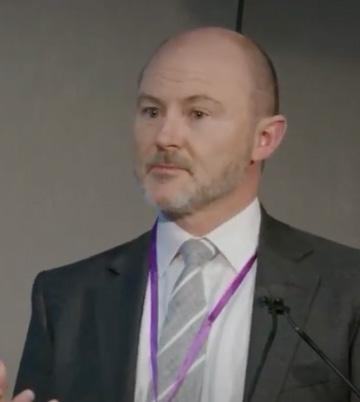

• Jane Bailey, Jason Kew and Alex Stevens5 talked about their experience of drug diversion scheme.
• Ben Martin, Professor Eddie Kane (who also writes in this magazine) and Stan Gilmore6 discussed diversion related people with health needs.

• Bami Jolaoso, James Davidson and Shade Abiodun7 discussed racial disparities in diversion.
• Sarah Carlsen Brown, Andrew Crowe, Aelfwynn Sampson and Dr Peter Neyroud8 offer their perspective on Deferred Prosecution and Outcome 22.
• David Apparicio, Bruce Houlder and Alison Sabaroch9 considered best practice in diverting under 18.
• Claire Johns, Leanne Spiller and Roger McMillan10 shared experience on programmes and specific solutions when diverting women.
• Jac Charlier gave us a perspective from the US from PTACC. Pav Dhaliwal and Anthony Egunjobi brought a lived experience perspective from Revolving Doors. Niven Rennie11 talked about “Murder capital of the Europe” and a public health approach to dealing with crime in Scotland
15 www.FightingKnifeCrime.London FIGHTING KNIFE CRIME
Andy Cooke Lucy Jaffe
Conroy Harris
Niven Rennie Penelope Gibbs
Tim Godwin
Gaving Stephens
Throughout the day the delegates heard “Lightning Talks” from those organisations that deliver life changing intervention programmes. We heard from Conroy Harris at Band of Brothers 12. We learnt how his programme connects young men with older local men in the community over a three month programme. Young men learning directly from older men. Once you're in the band, you never leave!
Emma Hazan from the Hampton Trust 13 talked about the transformational benefits on suitable offenders of domestic abuse through the CARA (Cautioning And Relationship Abuse) programme. CARA is an excellent example of where the evidence supports diversion programmes. We benefitted to the experience of Lucy Jaffe, director of Why Me 14 , a Restorative Justice (RJ) provider. Lucy’s organisation brings together “harmed and harmer” to understand harm caused and how to avoid further harm. Lucy gave a personal insight into the impact of crime and practical tips on promoting RJ in each region.
Gavin Stephens, about to take up his new role as Chair of the National Police Chief’s Council (NPCC) 15 , gave the closing key note speech. Gavin talked about his experience of implementing diversion programmes in Surrey. How they started small and grew the range of services on offer. He emphasised the work and the benefits of working with children and young people.
His advice was threefold:
• Keep it simple.
• Focus on the people not the process, relationships are key. Take an interest in people. Keep end goal in mind “Being Safe, feeling safe”
He emphasised the importance of sticking to these principles even when times are tough. “I will always be an advocate for this type of work”.
The day was wrapped up by Make Time Count’s Chair Tim Godwin, former Acting Commissioner of the Metropolitan Police Service. Tim raised the spirits of a tired room with tales about the problems of setting unrealistic targets, and the adverse behaviour this can drive. He also talked about how reducing crime is possible, referencing how successfully previous incarnations or reassurance policing, working in partnership with the community, had had a positive impact of reducing crime. “You’ve lifted my mood”, he said. Through the work now being done, we have got a headstart on what his teams were pushing back then, as now we have the technology, the data and the evidence. “Do not give in” he said. An energetic end to what was an exhausting day.
The team at Make Time Count was overwhelmed by the positive feedback from the day. Delegates enjoyed the format, and loved hearing the Lightning Talks, and were certainly left wanting to hear more. We look forward to Diversion 2024.
Short and long versions of all the main sessions can be found here:

16 FIGHTING KNIFE CRIME www.FightingKnifeCrime.London
ACCESS VIDEOS
Further Reading
[1] Former Chief Constable, now His Majesty's Inspectorate of Constabulary and Fire & Rescue Services (HMICFRS)
[2] https://www.transformjustice.org.uk
[3] See the full Diversion Summit agenda and speakers here

[4] Success factors for diversion Chris Baker, Leicestershire Police; Katie Harber, Metropolitan Police; Jim Holmes, Thames Valley Police
[5] Drugs diversion & solutions Jason Kew, Centre for Justice Innovation https:// justiceinnovation.org/aboutcji ; Alex Stevens, Kent University; Jane Bailey, West Midlands Police
[6] Vulnerabilities in diversion & solutions Ben Martin, Cambridgeshire Police; Professor Eddie Kane, Centre for Health and Justice, https:// www.centerforhealthandjustice.org ; Stan Gilmour, Thames Valley Police
[7] Racial disparities in diversion Bami Jolaoso, Centre for Justice Innovation https://justiceinnovation.org/aboutcji ; James Davidson, Sussex Police; Shade Abiodun, THB Legal, https://thblegal.com
[8] Deferred prosecution and outcome 22 Sarah Carlsen, Devon & Cornwall Police; Andrew Crowe, Durham Checkpoint https://justiceinnovation.org/project/ checkpoint ; Aelfwynn Sampson, Northumbria Police; and Dr Peter Neyroud CBE QPM, The Police Executive Programme at the Institute of Criminology, University of Cambridge. Dr Neyroud is also an Associate Professor in Evidence-Based Policing ,and the Director of the M.St. Degree in Applied Criminology and Police Management (Police Executive Programme) at the Institute of Criminology, University of Cambridge, and see https://www. cambridge-ebp.co.uk .
[9] Best practice in diverting under 18s & solutions David Apparicio MBE, Chrysalis Programme: Bruce Houlder, Founder Fighting Knife Crime-London www.fightingknifecrime.

london : Alison Sabaroche, Youth Justice Service, London Borough of Hammersmith & Fulham
[10] Best practice in diverting women & solutions Roger McMillan, Metropolitan Police; Claire Johns, St Giles Trust https://www.stgilestrust.org.uk ; Leeane Spiller, Surrey Women's Centre https://www. womenssupportcentresurrey.org.uk
[11] Comparative approaches Jac Charlier, PTACC https://ptaccollaborative.org ; Pav Dhaliwal and Anthony Egunjobi, Revolving Doors https://revolving-doors.org.uk ; Niven Rennie, Hope Collective http://www. hopecollectiveuk.org
[12] https://abandofbrothers.org.uk
[13] https://hamptontrust.org.uk/program/cara/ [14] https://why-me.org/about/meet-the-team/ [15] https://www.surrey.police.uk/news/ surrey/news/2022/10/chief-constable-gavinstephens-set-to-leave-force/
17 www.FightingKnifeCrime.London FIGHTING KNIFE CRIME
Jonathan Ley
www.maketimecount.today
Founder and CEO, Make Time Count
Jonathan Ley
“Out of Court Shouldn't be out of Mind”
Penelope Gibbs, Director, Transform Justice
“It has never been the rule in this country—I hope it never will be— that suspected criminal offences must automatically be the subject of prosecution”. So said Sir Hartley Shawcross, Britain’s lead prosecutor in the Nuremberg Trials, a view supported recently by Andy Cooke, Chief Inspector of Police and Fire Services. All prosecutions should be in the public interest.
Go to your local magistrates’ court and watch any day’s court hearings and you will wonder whether today’s police and prosecutors have forgotten Sir Hartley’s wise words. You will see people accused of shoplifting some groceries, of having a small amount of cannabis in their pocket, of not having the right ticket on the tube. These are crimes and cause harm to individuals, businesses and society at large, but do court sanctions fit the crime? Most of those who commit lower-level crime plead guilty and are sentenced to pay a court fine. They struggle to pay –they often have very little money and lead chaotic lives. Having to pay a court fine is a punishment, but there is little evidence punishment on its own changes behaviour.
Some police forces are champions of resolving crime out of court. They try to offer those who have committed lowerlevel offences the opportunity to change their behaviour and make amends without receiving a court sanction. Police officers can refer those with addiction
problems to services, they can persuade people to apologise to the victim and they can get them to pay compensation for a broken window or keyed car. Police have a choice. They can either use out of court disposals – where the suspect receives an informal or formal sanction – or divert straight to the services the suspect needs. The suspects are often people with complex health and family issues. There is no silver bullet. But resolving crime out of court seems to deal better with lower-level crimes than court. More than a third of those sentenced to imprisonment reoffend in the year after leaving prison. Only 19% of those who receive a caution (the main out-of-court disposal) reoffend in the year after receiving it. Resolving crime outside a courtroom is on average more effective than court sanctions in reducing offending. But what about victims? Recent surveys suggest the public seek severe punishment even for lower-level crimes – 95% of the public polled wanted a court sanction for someone found not wearing a seat belt in a moving car. 15% of all those polled wanted the seat belt avoider to go to prison. So, when faced with a crime done to them, what do victims want? When the reality hits, many victims are less punitive than the polls would suggest. Most want their hurt and loss recognised, they want the crime to be resolved and they want something to be done to stop the person who harmed them doing it again. For
18 FIGHTING KNIFE CRIME www.FightingKnifeCrime.London
lower-level crimes, many victims don’t particularly want the case to go to court, but it’s all they know about.
The Turning Point diversion programme shows that victims can be more satisfied by a crime being resolved out of court than if it were prosecuted. ‘Turning Point’ was a deferred prosecution programme which ran in Birmingham. When someone who had committed a lower-level offence could be identified, police in custody offered the person the option of undergoing a rehabilitative programme or being prosecuted. The suspects didn’t have to formally admit the offence and would not get a criminal record if they completed the programme. The police consulted victims about their views – whether they were OK with resolving the crime without going to court. When victims understood that the individual who punched them when drunk/stole their phone/was found with a knife might change their behaviour through Turning Point, most were positive. Overall, victims whose crime was dealt with out of court were more positive than those where the accused was prosecuted.
One of the key advantages of deferred prosecution programmes like ‘Turning Point’ is that suspects can make amends and work on turning their lives around without the ‘life sentence’ imposed by a criminal record. Any employer can ask for a criminal record check, and some types of check can reveal crimes committed many years before. A significant minority of employers will not hire anyone with a criminal record, and it can also be more difficult to get housing and to travel. Most suspects who are dealt with by the police out of court don’t get a criminal record, even if they admit responsibility, but one out-of-court sanction – the

caution – does attract a criminal record. Receiving a caution is still better than receiving a court conviction, but we are campaigning to change the law, so cautions are never automatically disclosed on criminal records. The campaign www.fairchecks.org.uk is open to all those who feel that the current criminal records disclosure system blights the futures of children and young people. Do join us.
For more information about how to resolve crime without going to court www.linktr.ee/transformjustice or browse our website
www.transformjustice.org.uk
www.transformjustice.org.uk

19 www.FightingKnifeCrime.London FIGHTING KNIFE CRIME
Penelope Gibbs Director, Transform Justice
Penelope Gibbs
Identifying Violence Reduction Intervention Points – Applying a Public Health Approach Effectively
Eddie Kane, Professor, Centre for Health and Justice, University of Nottingham, co-authors: Jack Cattell, Get the Data Ltd. & Jon Parry, Workforce Trust
Violence including knife crime, is a major public health concern - it affects many peoples’ lives each year, through death,
injury, and detrimental impacts on physical and mental health. 1 It also places a significant burden on local and national economies with some
20 FIGHTING KNIFE CRIME www.FightingKnifeCrime.London
image: rawpixel.com - Freepik.com
estimates suggesting the global costs could be as high as 11% of the world’s gross domestic product. 2 Using a public health approach to address violence reduction has become the model of choice in many jurisdictions and is built on a cycle of four repeating steps: surveillance, identification of protective and risk factors, implementation of beneficial interventions and developing and evaluating those interventions. These four strands are guided by a social ecological model that seeks to explain why some populations are at greater risk of violence than others. The model stimulates consideration of risk and protective factors at the individual, community and societal levels.
However, recent research has raised questions that should prompt a review of where and how to apply this approach. There is emerging evidence that applying this structure and model to counteract growing trends in violence across a whole metropolitan or local authority area is not the most effective way to target investment and interventions designed to reduce violence, as violence appears to be concentrated in pockets within wider communities and areas. 3,4 In a recent study we examined a London-wide picture using Local Super Output Areas (LOSAs) – comprising between 400 and 1,200 households - and have a usually resident population between 1,000 and 3,000 persons as our base unit of data collection and analysis, rather than starting from a relatively limited sample of areas within London, as previous studies had done. We found significant variation in the incidence of violence and violent crime within the whole Metropolitan area,
within local authorities and within communities. To do this we analysed a range of datasets that are commonly used to measure vulnerability to violence. These include deprivation and other societal and economic data, health (hospital, ambulance and Public Health England, education data including Schools Health Education Unit survey (includes pupils, parents, perceptions, lifestyle), Crime Survey of England and Wales, Police Recorded Crime, community infrastructure investment, alcohol use, transport, accommodation patterns, night-time economy activity and alcohol licensing patterns and density. We collated and analysed these data to identify distributions and trends. We examined the correlations between individual or combinations of factors that appeared to be linked to high and/or rising levels of violence. This allowed us to complete cluster analyses to identify LSOAs that appeared similarly vulnerable to violence. We found that violence and violent crimes were clustered in a small number of LSOAs. We selected nine areas for more detailed qualitative and quantitative study. As a starting point for the identification of the nine target areas we used Sutherland’s definition of neighbourhoods vulnerable to violence i.e., neighbourhoods that have levels of violence significantly above average, specifically those in the 75th percentile or higher compared to the rest of London in a given year (ibid)
In addition, we also looked at a mix of the areas identified to include LSOAs with a high and increasing violent crime trajectory but also other LSOAs with lower but still relatively high rates of violent crime – the final nine
21 www.FightingKnifeCrime.London FIGHTING KNIFE CRIME
Barking and
Haringey -
Dagenham
HackneyHounslowGreenwichTower HamletsWestminsterLewishamSouthwark -
Kensington and Chelsea -
Hammersmith and Fulham -
-
32
39
Camden -
BexleyWaltham Forest -
BromleyRedbridgeMertonWandsworth -
Havering -
Sutton -
Barnet -
Kingston upon Thames -
Harrow -
Richmond upon Thames -
upper quartile of violence rate. 11
police 28
Source: Metropolitan police (City of London excluded) Proportion of LSOAs within the London Local Authorities that are in the 39 38 37 36 35 35 34 33 30 28 28 28 27 26 26 24 23 21 19 17 16 16 16 15 15 12 9 7

22 FIGHTING KNIFE CRIME www.FightingKnifeCrime.London
Source: Metropolitan
Violence rate in London LSOAs 2019-2021 (Light yellow indicates lower rates below the 25th percentile, Red indicates higher rates above the 75th percentile) (City of London excluded)
LambethBrentEnfieldCroydonEalingNewhamIslington -
Hillingdon -
areas were all in the 90th percentile of violence in London.
We found that many of the same drivers that have featured in violence research over a long period – e.g. socio-economic deprivation – remain key correlates but also some new areas, such as universities as vectors for violence and exploitation and the need for greater integration of data across agencies at a much more granular level than is currently the case to enable better analysis of violence in communities and plan with them for change. 5 We also carried out local social media posts analysis and ‘community in-box’ surveys within the nine areas. The qualitative data drew a picture of, amongst other issues, initiative fatigue, poor intervention resource targeting, dysfunctional housing policy and practice and poor environmental design, as perceived drivers of violence and violent crime within the nine LSOAs. They also identified potential positive approaches including early-intervention programmes, real co-production of solutions with affected communities and cross-agency partnership building.
Whilst the public health approach to violence reduction has a key role to play it has to date been generally applied to whole cities or counties. Our research indicates that this may not be the most effective way to target resources, and that the focus should be at a much more granular level that better targets interventions and investments into the areas where they will have most impact.
Further Reading
[1] WHO Violence Prevention Unit: approach, objectives and activities, 2022-2026: https://www.who.int/publications/m/item/whoviolence-prevention-unit--approach--objectives-andactivities--2022-2026: (accessed 14th November 2022)
[2] Benefits and Costs of the Conflict and Violence Targets for the Post-2015 Development Agenda Consensus: https://www.copenhagenconsensus. com/sites/default/files/conflict_assessment_-_ hoeffler_and_fearon.pdf
[3] Violence in London: what we know and how to respond; Weishmann et al 2020 https://www.bi.team/publications/violence-inlondon-what-we-know-and-how-to-respond/
[4] Sutherland, A., Brunton-Smith, I., Hutt, O. & Bradford, B. (2019) Violent crime in London: trends, trajectories and neighbourhoods. College of Policing 2019: https://www.bi.team/wpcontent/uploads/2020/02/BIT-London-ViolenceReduction.pdf
[5] Neighbourhoods Affected by Violence. Kane et al for Mayor of London Violence Reduction Unit 2021: https://www.london.gov.uk/programmesstrategies/communities-and-social-justice/ londons-violence-reduction-unit/our-research
Editor’s Note: the reports referenced in this article are also available on www.fightingknifecrime.london/resources
Eddie Kane Professor, Centre for Health and Justice, University of Nottingham

23 www.FightingKnifeCrime.London FIGHTING KNIFE CRIME
Eddie Kane
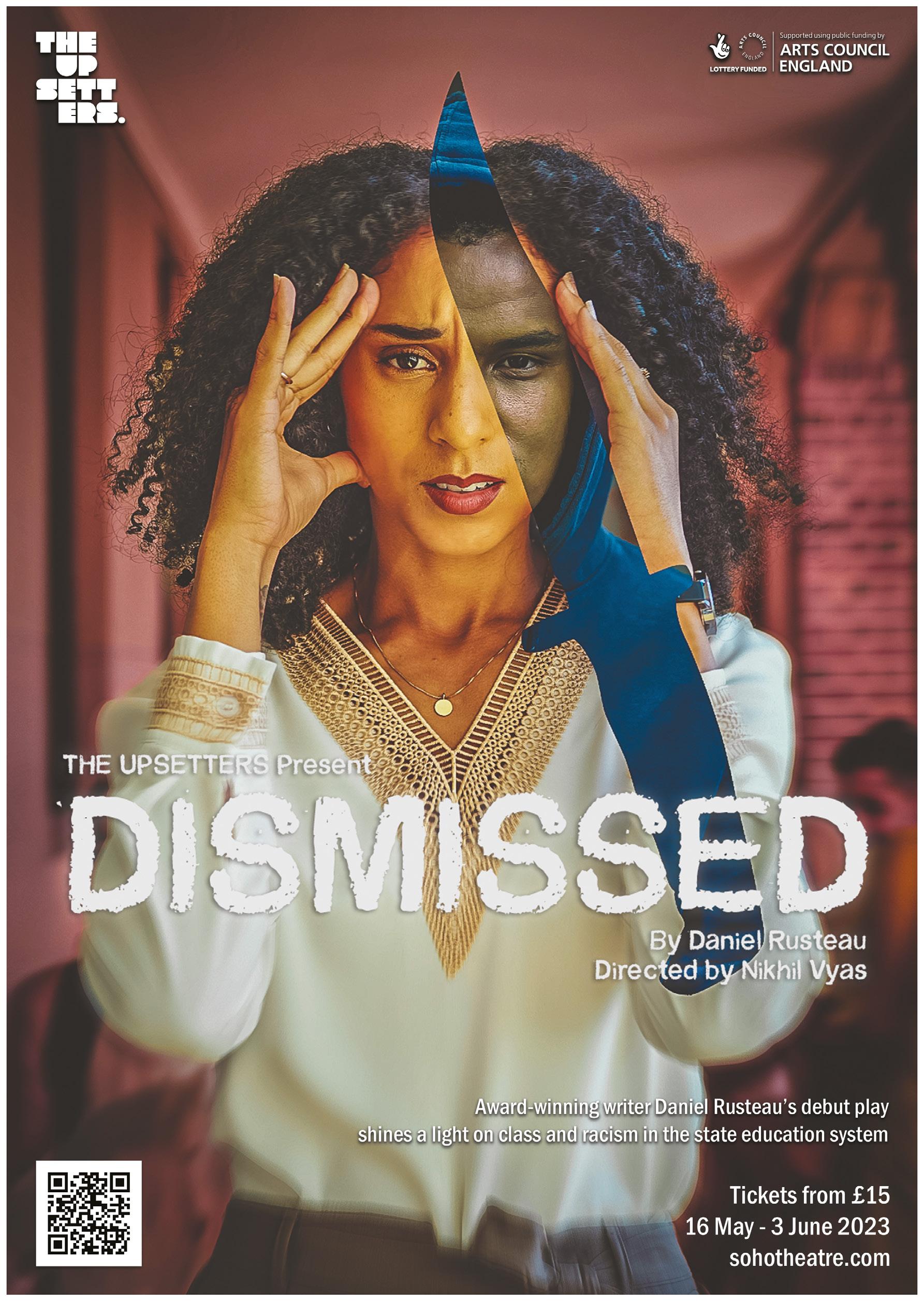
Deflection – An Effective, Out-of-Court Means of Addressing the Drug Crisis
Jon Ross, PhD, Director of Research & Evaluation, TASC's Center for Health & Justice in Chicago, USA
George Bernard Shaw once remarked that "England and America are two countries separated by a common language." That may be true in some ways, but increasingly our two countries are united by a new term – “deflection” –that dramatically retools how police and communities respond to drug use, drug offences, and related quality-oflife crimes.
Deflection – which emphasises treatment, social services, and recovery over arrest and prosecution, particularly around offences like drug
possession/drug use – has grown rapidly in the United States over the past several years, largely in response to another phenomenon our two countries share: unprecedented rates of drug overdoses and drug-related deaths 1. Like the US, the UK faces its highest-ever number of drugrelated deaths, while drug use – and the lethality of drugs on the streets –continues to grow.
Deflection, by leveraging helpseeking and treatment, offers hope in many ways. First, it keeps people out of the criminal justice system and
25 www.FightingKnifeCrime.London FIGHTING KNIFE
CRIME
image: Macrovector - Freepik.com
courts, freeing up the system (and police) to prevent and fight crimes against individuals and communities –a particularly useful outcome during the COVID-19 pandemic, when out-ofcourt resolution and community-driven solutions were necessarily more widely employed than ever before 2
In addition, destigmatising drug use is critical to advancing treatment. Deflection offers promise by diminishing the burden associated with drug possession/use. Further, because enforcement of drug crimes tends to fall heavier on minorities and marginalised populations, deflection can help reduce inequities – not only in terms of arrest but in helping increase help-seeking, harm reduction, and treatment among individuals and groups who often fall through the cracks or are less likely to enter or complete treatment 3
Finally, being arrested for drug possession or petty theft (a crime typically associated with drug use/ addiction) can have a devastating effect on one’s life – affecting careers and income stability, family relations, and even the prospect of getting treatment. By emphasising early intervention and avoidance of the courts, deflection upends the traditional model, focusing on the “front end” of the system.
Deflection is among the diversion schemes already in place and everexpanding in the UK, and is widely employed in the U.S. by hundreds of police agencies, public health departments, and the treatment, services, and recovery providers who collaborate with them 4. Deflection has for several years been part of the U.S. national drug strategy 5, and now is part of the UK’s drug strategy.
How deflection works
Most deflection cases are resolved in the community and relate to drug possession/ use, allowing those in possession of small amounts of illegal drugs to follow an out-ofcourt treatment protocol, developed and administered locally, in lieu of incrimination or arrest. It is a trauma-informed, early intervention approach designed to address drug use and associated health/ social factors built around the promise of recovery over prosecution. Often, police are minimally involved after the initial contact; mental health or drug treatment professionals connect with individuals to initiate a treatment plan.
This was the case in a highly successful scheme employed in the Thames Valley Police and Violence Reduction Unit6 When police found an individual in possession of a controlled substance, the first contact the individual received was from the drug service. It was done in the belief that each case was an opportunity to be addressed as a health-related encounter, not a police incident.
Initiatives like Thames Valley, the evidence shows, not only move individuals into treatment more quickly than waiting for courts7, they help reduce reoffence and harm – and cost far less (often a small fraction) than booking and adjudication. For example, “Checkpoint,” an initiative in the Darlington/ Durham area, contributed to a drop in reoffending of more than ten percent overall and 30 percent when compared to individuals who went through the courts system 8
Deflection/diversion schemes have also proven successful in pilots tied to decriminalising sex work, another area tied to drug use, helping reduce violence against sex workers and contributing to
26 FIGHTING KNIFE CRIME www.FightingKnifeCrime.London
many desisting from crime – including sex work9

Deflection, though available to relative few UK police, has proven successful among stakeholders, including victims of crime, who can be content to see their cases disposed of out-of-court10. It is changing the landscape of response to drug offenses. In a world where the overwhelming share of police work is oriented not toward what we see on TV crime programmes but toward the social fabric of the community, compassionate, traumainformed policing and response to the scourge of drugs are critical. Deflection/ diversion schemes offer this promise.
Further Reading
[1] United States Centers for Disease Control and Prevention. (2022). U.S. overdose deaths in 2021 increased half as much as in 2020 - but are still up 15% https://www.cdc.gov/nchs/pressroom/nchs_press_ releases/2022/202205.htm
[2] Shaw, D., Stott, J., Kirk, E., & Adams, D. (2022) The use of out-of-court disposals and diversion at the ‘front end’. Crest Advisory. https://www. crestadvisory.com/post/the-use-of-out-of-courtdisposals-and-diversion-at-the-front-end
[3] Mennis, J., & Stahler, G. (2016). Racial and ethnic disparities in outpatient substance use disorder treatment episode completion for different substances. Journal of Substance Abuse Treatment, 63, 25-33. https://doi.org/10.1016/j.jsat.2015.12.007
[4] United States Department of Justice, Bureau of Justice Assistance, Comprehensive Opioid, Stimulant, and Substance Abuse Program; TASC’s Center for Health & Justice; & NORC at the University of Chicago. (2021). Report of the national survey to assess first responder deflection programs in response to the opioid crisis: Final report. https:// www.cossapresources.org/Content/Documents/ Articles/CHJ-TASC_Nation_Survey_Report.pdf
[5] White House Office of National Drug Control Policy. (n.d.). National Drug Control Strategy. https:// www.whitehouse.gov/ondcp/national-drug-controlstrategy/
[6] Justice Innovation.org (n.d.). Thames Valley Drug Diversion Scheme. https://justiceinnovation.org/ project/thames-valley-drug- diversion-scheme
[7] Shaw, D., Stott, J., Kirk, E., & Adams, D. (2022) The use of out-of-court disposals and diversion at the ‘front end’. Crest Advisory. https://www.crestadvisory.com/ post/the-use-of-out-of-court-disposals-anddiversion-at-the-front-end
[8] Weir, K., Kilili, S., Cooper, J., Crowe, A., & Routledge, G. (2022). Checkpoint: an innovative Programme to navigate people away from the cycle of reoffending–a randomised control trial evaluation. The Police Journal, 95(3), 562-589; https://justiceinnovation.org/project/ checkpoint
[9] Balderston, S. (2019) Advocacy & social policy impact research evaluation: The Nelson Trust Sex Worker Outreach Project (SWOP): Final Report 2015 – 2018. Lancaster: Lancaster University.
[10] Shaw, D., Stott, J., Kirk, E., & Adams, D. (2022) The use of out-of-court disposals and diversion at the ‘front end’. Crest Advisory. https://www.crestadvisory.com/ post/the-use-of-out-of-court-disposals-anddiversion-at-the-front-end
Jon Ross, PhD Director of Research & Evaluation, TASC's Center for Health & Justice in Chicago, USA
27 www.FightingKnifeCrime.London FIGHTING KNIFE CRIME
Jon Ross, PhD
















28 www.FightingKnifeCrime.London @KnifeCrimeLdn @Fighting Knife Crime London @Fighting Knife Crime London Fighting Knife Crime LDN info@fightingknifecrime.london Cant find what you need? Contact info@fightingknifecrime.london FIGHTING KNIFE CRIME MAKE THE CHANGE NOW www.fightingknifecrime.london A completely confidential online space for young Londoners to find solutions to a better way of living KEEP SAFE FIND SUPPORT REACH OUT FIND A JOB ● FIND A MENTOR ● FIND FRIENDS MUSIC ● MEDIA ● ARTS ● SPORT ● NEW SKILLS Fighting Knife Crime London is about Changing the Future all our Young People SCAN HERE FOR OUR HOME PAGE AND HELPLINES SCAN FOR OUR LONDON-WIDE DIRECTORY OF ORGANISATIONS AND COMMUNITY PROJECTS WE ALSO PARTNER WITH LOCAL VILLAGE NETWORK WHOSE USEFUL APP YOU CAN FIND HERE Point your phone camera at the QR codes and wait for your device to detect the link. www.fightingknifecrime.london SCAN HERE TO DOWNLOAD FIGHTING KNIFE CRIME LONDON MEDIA ASSETS
The CARA effect
How a Trauma-informed Early Intervention for Domestic Abuse Offenders Opens the Space for Behaviour Change
Emma Hazan, CARA Development Manager, The Hampton Trust
When Adam arrived at the CARA workshop, he was certain that he shouldn’t be there and that this was all a waste of time. He had been arrested for a domestic abuse offence and, as it was his first offence and considered low level, had received a conditional caution. Whilst this meant he wasn’t prosecuted, it was

under the condition that he attend a pair of CARA workshops.
Project CARA, which was developed by Hampton Trust in 2011 in partnership with Hampshire and Isle of Wight Constabulary, stands for Cautioning and Relationship Abuse and is an awareness-raising early intervention targeting alleged
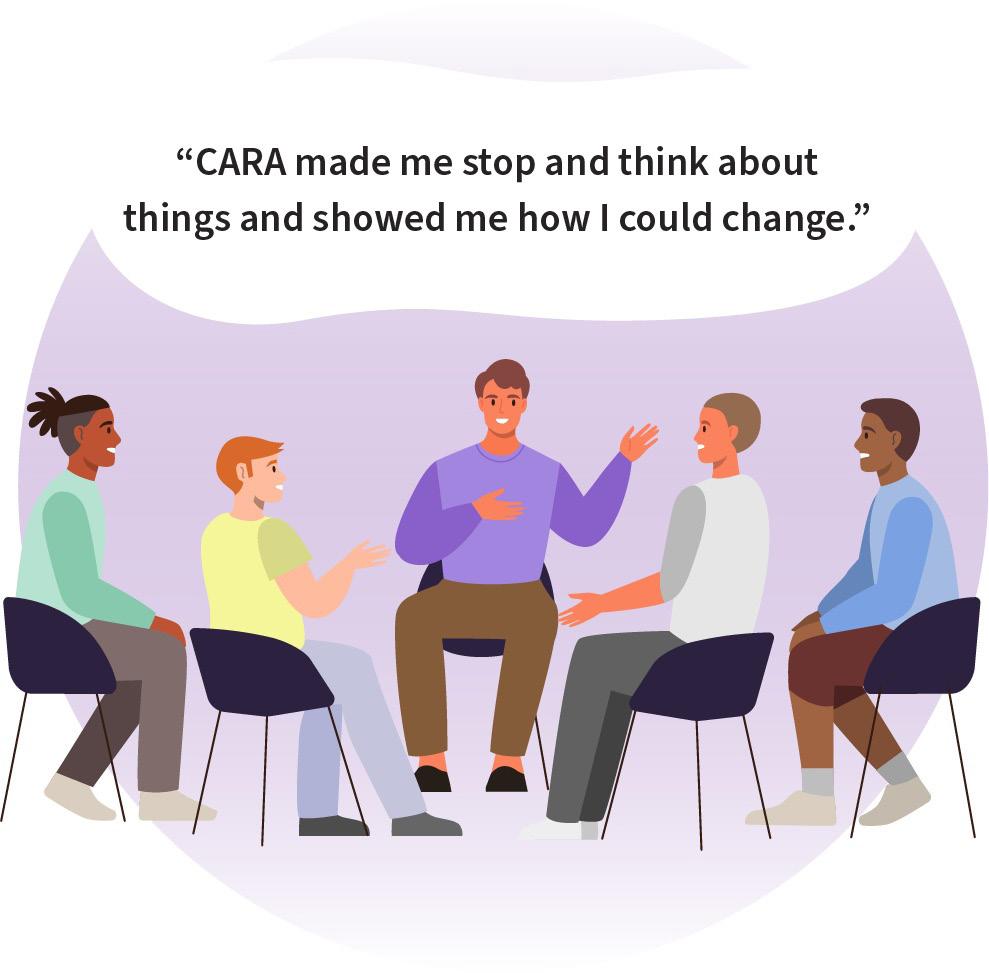
29 www.FightingKnifeCrime.London FIGHTING KNIFE CRIME
first-time offenders of domestic abuse. Originally conceived as an alternative to a simple caution with no further action, under the new two-tier out of court disposal framework coming into force soon, it can be offered as part of a diversionary caution to support rehabilitation and change.
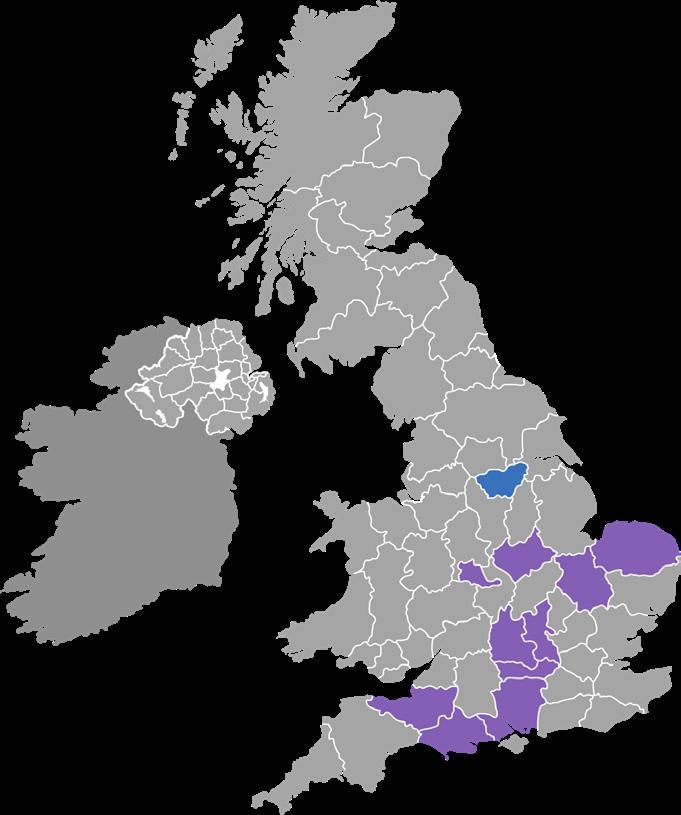
Following police involvement in a domestic abuse incident, suitable offenders are identified and referred through clear eligibility criteria. They attend two full-day group workshops delivered one month apart which take offenders on a journey to understand the wider context and devastating impact of domestic abuse and support them to explore, understand and manage their own personal risk factors. Through this trauma-informed approach combined with meaningful engagement and skilled facilitation, offenders are encouraged to reflect on their behaviour, attitudes and
assumptions, and are supported and motivated towards change through signposting to wider support services. The group setting offers valuable opportunities for peer challenge and peer learning.
In Adam’s case, the CARA facilitators, who are trained to anticipate resistance, responded with encouragement. When Adam started to engage, he disclosed his own challenges in processing his emotions following a recent loss and made connections between his feelings of grief and his mental health and use of alcohol. He left the first workshop indicating he had a lot to think about and having identified a personal goal: Starting to go to the gym to manage his built-up energy, and to explore grief counselling
At the second workshop, Adam reflected that he had previously not wanted to even think about his
30 FIGHTING KNIFE CRIME www.FightingKnifeCrime.London
Current CARA delivery areas
own grief and was focused on being angry with the world, but that he now understood that dealing with grief was a journey, that he wanted to learn more about local support available, and that he already feels lighter and more able to deal with lifes’ stressors. Adam also reflected that he could see how his previous attitude had been impacting his partner, and that he wanted to change that.
Since it was launched in 2011 in Hampshire, CARA has helped thousands of first-time domestic abuse offenders like Adam. More than ten years later it is delivered in nine police regions in England: In Hampshire, West Midlands, Dorset, Avon & Somerset, Leicestershire, Cambridgeshire, Norfolk, and Thames Valley it is delivered directly by Hampton Trust; in West Yorkshire we have partnered with Restorative Solutions to deliver CARA through our new licenced model for replication. This allows commissioned organisations with knowledge of their local areas to deliver CARA in their region with training, guidance, materials and quality assurance provided by Hampton Trust. (see image on page 30)
We have also developed a separate workshop for female offenders with adaptations that respond to the unique vulnerabilities of female offending, including gender dynamics of domestic abuse, retaliatory violence, and unique risk factors.
CARA is proven to reduce reoffending
The evidence that CARA works is compelling: Since the initial pilot evaluation through a randomised control trial there have been several further evaluations demonstrating the effectiveness of this intervention.
Clearly shown benefits include a reduction in reoffending, victims reporting positive changes, and offenders reporting a change in attitude towards partners and children.
“I’ve cut down drinking considerably and am committed to being a better father and husband.”
CARA participant
A Hampshire & IOW Constabulary internal evaluation in 2021 saw a 81% reduction in future domestic abuse offending and a 55% reduction in future violent domestic abuse offending, and an evaluation in the same year by the University of Birmingham evidenced a 56% reduction of reoffending within the first 12 months and also showed that for every £1 invested, £2.75 is gained by that police force area. An evaluation of CARA across all nine police regions is currently ongoing - initial findings show evidence of positive reflections and change from the interviewed participants.
And it’s not just the offenders who are positively impacted by the intervention: More than 60% of victims who are still in contact with the offender report a change in the offender’s behaviour after the first workshop.
“More communication since the CARA intervention. Things are better than they have ever been. We are dealing with things together and talking things through.”
Adam’s partner
CARA was developed based on input from domestic abuse victims which has challenged assumptions and reinforced
31 www.FightingKnifeCrime.London FIGHTING KNIFE CRIME
what we know and what colleagues working directly with families affected by domestic abuse see every day: Many victims don’t want to leave their partners, especially when children are involved. They want their partners to change. Therefore, involving victims is crucial to a successful intervention - not only prior to issuing the caution, but also between the workshops to ensure the intervention remains safe for the victim and is indeed an improved criminal justice response.
As in Adam’s case, one of the biggest issues we encounter when trying to work with perpetrators of domestic abuse is what we call MDB: minimisation, denial, and blame. Many perpetrators are initially unwilling to engage because they don’t see anything wrong with their behaviour. However, the more engaged an offender is, the more likely they are to successfully complete the intervention and go on to take up further opportunities for support to tackle some of their underlying issues.
Instead of shaming offenders for being in a space of MDB, our CARA facilitators anticipate this resistance and work with them to help them see that a different way is possible. Empathy and accountability are not mutually exclusive. As a result, in almost every cohort we have offenders telling us that this was the first time they’ve ever spoken like this, thought about these things, felt comfortable to share, and hear that other people have these issues too.
Personally, I have been delivering CARA for many years and have seen the power of the space to open up conversations as crucial to guiding towards change. It’s what we at Hampton Trust call the CARA effect: The shift between workshops from resistance, challenge, and anxiety to openness, reflection, and planning for a more positive future.
www.projectcara.org.uk

Emma has been working in domestic abuse and gender-based violence for over 10 years. She has a Masters of Social Work in policy and intervention to help further her work in ending domestic abuse and has worked with victim services in South Korea, New Zealand, Canada and the UK. Emma joined Hampton Trust in 2015 as a sessional facilitator for ADAPT (Accredited Domestic Abuse Perpetrator Training) and began delivering CARA (Cautioning and Relationship Abuse) in 2016. Since 2021 she supports Hampton Trust as CARA Development Manager.

Hampshire-based Hampton Trust was founded in 1996 to address the gap in domestic abuse perpetrator programmes within the criminal justice system. The award-winning organisation’s mission is to design and deliver innovative interventions, training and education to break the cycle of abuse and rebuild lives.

32 FIGHTING KNIFE CRIME www.FightingKnifeCrime.London
Emma Hazan
CARA Development Manager, The Hampton Trust
Emma Hazan



33 www.FightingKnifeCrime.London www.fightingknifecrime.london/magazine-subscription Subscribe free to our magazine www.fightingknifecrime.london Connect With Us FIGHTING KNIFE CRIME Supporting the fight against Knife Crime!

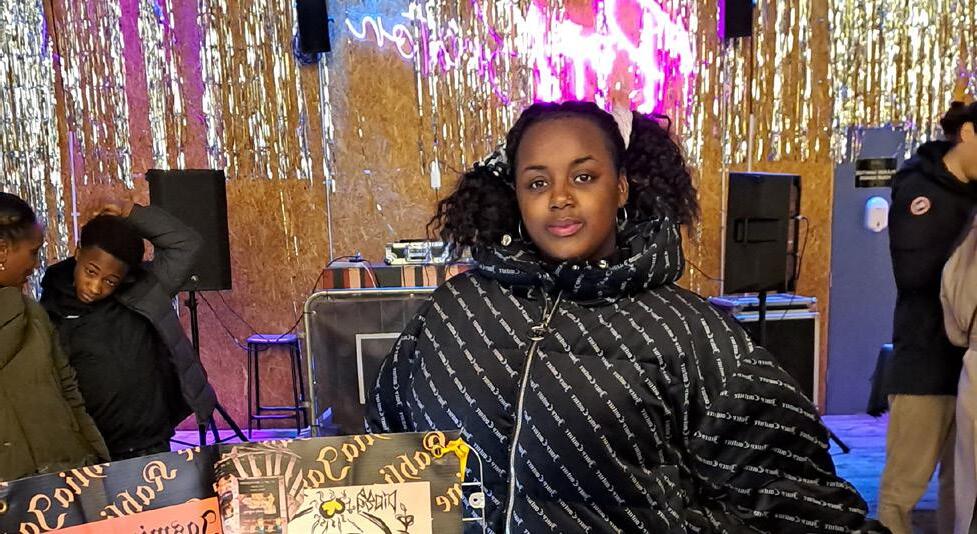

34 FIGHTING KNIFE CRIME www.FightingKnifeCrime.London www.fightingknifecrime.london Connect With Us Published By FIGHTING KNIFE CRIME




























































